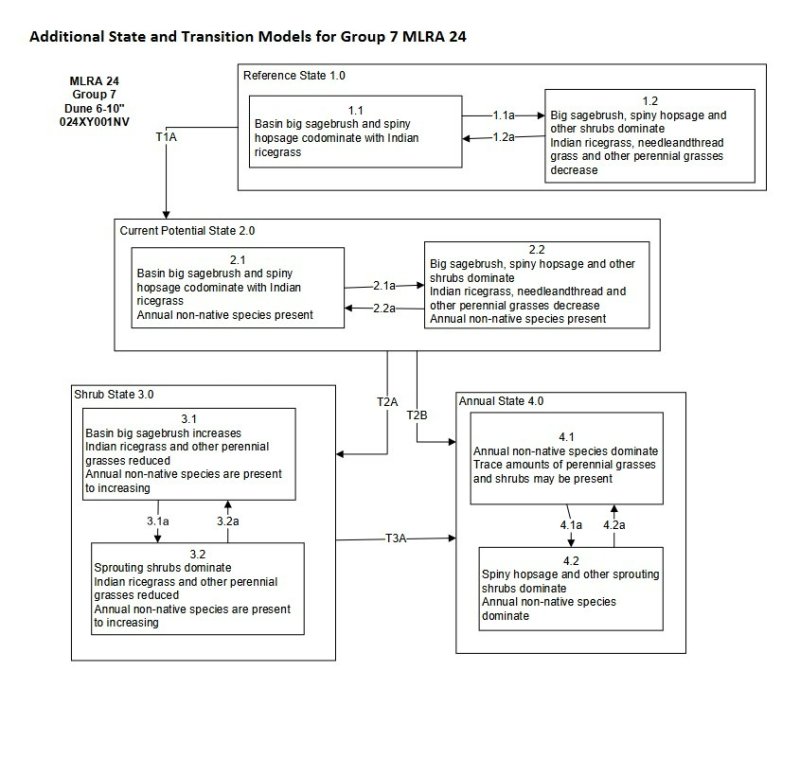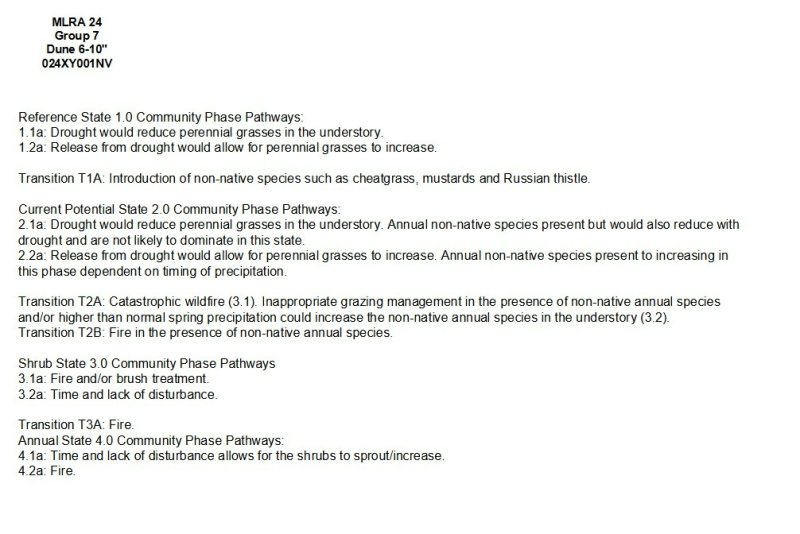Ecological dynamics
The plant communities of this site are dynamic in response to changing weather patterns and disturbance regimes. The reference plant community is dominated by Indian ricegrass and basin big sagebrush. Spiny hopsage, winterfat, fourwing saltbush and ephedra are associated shrub species. Needle-and-thread, thickspike wheatgrass, and basin wildrye are other common species.
This ecological site is characterized by coarse textured soils formed from eolian deposits. Soils associated with this ecological site are very deep and exhibit minimal characteristics associated with soil development. In arid and semi-arid systems, coarse-textured soils lose less moisture to evaporation than fine-textured soils and thus have higher water availability (Lane et al 1998). This principle, known as the inverse-texture hypothesis, predicts that plant communities on coarse-textured soils should have higher above-ground net primary productivity than communities on fine-textured soils.
Sand dunes form a unique system that can be mobile or fixed by vegetation. Over the course of geologic time, mobility of sand dunes is related to increasing aridity, and vegetation stabilizes during wet phases (Tsoar 2005). Sandy soils are highly susceptible to wind erosion. Management of the plant community should ensure sufficient plant cover to protect site from soil surface movement. Infiltration is rapid on coarse-textured soil reducing the potential for sheet and rill erosion during typical precipitation events.
Deep-rooted plants are well suited to this site because deep roots can take advantage of rapid infiltration and deep percolation of water. Big sagebrush root systems are well developed, with both lateral roots and tap roots. Tap roots penetrate as deep as six feet (1.8 Meters) (Howard 1999). Research suggests that the taproots of sagebrush plants absorb moisture from the deeper soil horizons and transport it to the lateral roots in the drier upper soil horizons (Richards and Caldwell 1987). Hydraulic lift by deep-rooted species can result in greater competitive ability for limited resources than root distribution would suggest.
Big sagebrush species regenerates solely from seed and do not sprout or layer. Big sagebrush generally flowers and sets seed in late summer and fall. Most seed shatters within a week of maturation and travels less than 100 feet (30.5 meters) from the parent plant. Germination occurs the following spring, cold stratification and light improves germination (Howard 1999). Sagebrush seedlings require sufficient soil moisture to germinate and survive. Mature shrubs, perennial bunchgrasses and litter can create microhabitats with very good germination conditions.
As ecological conditions decline and where management results in abusive grazing by livestock or feral horses, needle and thread and Indian ricegrass decrease. Sandberg's bluegrass and bottlebrush squirreltail increase and become the dominant understory vegetation. Further site deterioration, cheatgrass and annual mustards replace perennial grasses and dominate the understory. The dominant overstory vegetation becomes big sagebrush, rabbitbrush, and horsebrush. Cheatgrass, halogeton, annual mustards, and Russian thistle are species likely to invade this site. Reduction in plant cover or changes in plant community composition and structure increases the risk of active soil movement and dune creation or flattening.
Fire Ecology:
Sagebrush steppe communities have historically been subject to fires at varying intervals (25 to 70+ years). Fire severity in big sagebrush communities is described as variable depending on weather, fuels, and topography. Fire is the principal means of renewal for decadent stands of big sagebrush. Basin big sagebrush and Wyoming big sagebrush are readily killed when aboveground plant parts are charred by fire. Prolific seed production from nearby unburned plants coupled with high germination and survival rates is required to ensure establishment following fire.
In many big sagebrush communities, fire frequency, intensity and fire suppression have changed. Livestock grazing, and off-road vehicle use have also changed. Invasion of cheatgrass, mustards, and other annual non-natives decreases site resilience, increases the risk of stand-replacing fires, and decreases the potential for sagebrush and perennial grass establishment. Continual sand movement and subsequent burying of seed may prohibit seedling establishment.
Spiny hopsage is somewhat fire tolerant and commonly survives fires that kill sagebrush. Mature spiny hopsage generally sprout after being burned. Spiny hopsage is reported to be least susceptible to fire during summer dormancy. Indian ricegrass can be killed by fire, depending on severity and season of burn. Indian ricegrass reestablishes on burned sites through seed dispersed from adjacent unburned areas.
Needle-and-thread grass is top-killed by fire. It may be killed if the aboveground stems are completely consumed. Needle-and-thread grass is classified as slightly to severely damaged by fire. Needle-and-thread grass sprouts from the caudex following fire, if heat has not been sufficient to kill underground parts. Recovery typically takes 2 to 10 years.
Thickspike wheatgrass is quite tolerant of fire. Subsurface growing points and primarily rhizomatous reproduction may explain its ability to increase rapidly (within 2-5 years) following burning.
Basin wildrye is top-killed by fire. Older basin wildrye plants with large proportions of dead material within the perennial crown can be expected to show higher mortality due to fire than younger plants having little debris. Basin wildrye is generally tolerant of fire but may be damaged by early season fire combined with dry soil conditions.
State 1
Reference State
The reference state is representative of the natural range of variability under pristine conditions. The reference state has three general community phases; a perennial grass dominant phase, a shrub-grass dominant phase and a shrub dominant phase. State dynamics are maintained by interactions between climatic patterns and disturbance regimes. Negative feedbacks enhance ecosystem resilience and contribute to the stability of the state. These include the presence of all structural and functional groups, low fine fuel loads, and retention of organic matter and nutrients. Plant community phase changes are primarily driven by fire, periodic drought and/or insect or disease attack.
Community 1.1
Reference Plant Community 1.1
The visual aspect of the plant community is open canopy of perennial bunchgrasses and soft-woody shrubs. Dominant species include basin big sagebrush, Indian ricegrass and needleandthread. Spiny hopsage, thickspike wheatgrass and basin wildrye are important associated species. Potential vegetative composition is about 55 percent grasses, 10 percent forbs and 35 percent shrubs. Approximate ground cover (basal and crown) is 15 to 25 percent.
Table 5. Annual production by plant type
| Plant type |
Low
(lb/acre) |
Representative value
(lb/acre) |
High
(lb/acre) |
| Grass/Grasslike |
165 |
275 |
440 |
| Shrub/Vine |
105 |
175 |
280 |
| Forb |
30 |
50 |
80 |
| Total |
300 |
500 |
800 |
Community 1.2
Plant community 1.2
This plant community phase is characteristic of a post-disturbance, early seral community phase. This community is dominated by Indian ricegrass, needleandthread, and basin wildrye; big sagebrush decreases after fire and perennial bunchgrasses initially increase. Spiny hopsage and ephedra sprout from the root crown following fire and may increase. Scurfpea and rabbitbrush are common. Sagebrush may be present in trace amounts or in unburned islands. Fast moving, low intensity wildfire results in the incomplete removal of sagebrush allowing for direct reestablishment and a faster recovery. This plant community phase is at risk of invasion by non-native species. Non-natives are able to take advantage of increased availability of critical resources following disturbance.
Community 1.3
Plant Community 1.3
This plant community phase is characterized by a decadent overstory of basin big sagebrush, along with spiny hopsage and other shrubs. Perennial grasses are declining from drought, competition from over-mature shrub overstory, and inadequate rest and recovery from defoliation. In the absence of disturbance, sagebrush communities become monotypic stands of late successional plants. This results in reduced quantity and diversity of plant species, reduced sagebrush vigor and seed production. Over-mature sagebrush plants are very competitive for water, light and nutrients, preventing recruitment and establishment of other vegetation and increasing the amount of bare ground. This plant community is at risk of invasion by non-native species. Non-natives can easily invade plant communities where structural and functional groups are reduced. Increased bare ground is an indicator of site susceptibility to accelerated wind erosion.
Pathway 1.1A
Community 1.1 to 1.2
This community pathway is a result of fire, insect or disease attack.
Pathway 1.1B
Community 1.1 to 1.3
This community pathway is a result of prolonged drought, inadequate rest and recovery from defoliation and the absence or fire or other natural disturbances.
Pathway 1.2A
Community 1.2 to 1.1
This community pathway is a result of absence of disturbance and natural regeneration over time. Ten years or greater is required for big sagebrush to reach pre-fire conditions (Tirmenstein 1999).
Pathway 1.3A
Community 1.3 to 1.1
This pathway is a result of fast moving, low intensity fire, Aroga moth infestation of big sagebrush, adequate rest and recovery from defoliation or a release from drought which removes shrub overstory and releases bunchgrass understory.
Pathway 1.3B
Community 1.3 to 1.2
This community phase pathway is a result of stand replacing fire or other natural disturbance that reduce shrub cover and invigorates the perennial bunchgrass community.
State 2
State 2
This state is characterized by the presence of non-native invasive species in the understory. This state is similar to the Reference State (1) and has the same three general community phases. Ecological function has not changed, however, the resiliency of the state has been reduced by the presence of invasive weeds. Prescribed grazing and infrequent fire maintains state dynamics. These non-natives are highly flammable and can promote wildfire where fires historically have been infrequent. Negative feedbacks enhance ecosystem resilience and contribute to the stability of the state. These include the presence of all structural and functional groups, low fine fuel loads and retention of organic matter and nutrients. Positive feedbacks decrease ecosystem resilience and stability of the state. These include the non-natives high seed output, persistent seed bank, rapid growth rate, ability to cross pollinate and adaptations for seed dispersal.
Community 2.1
Plant community 2.1
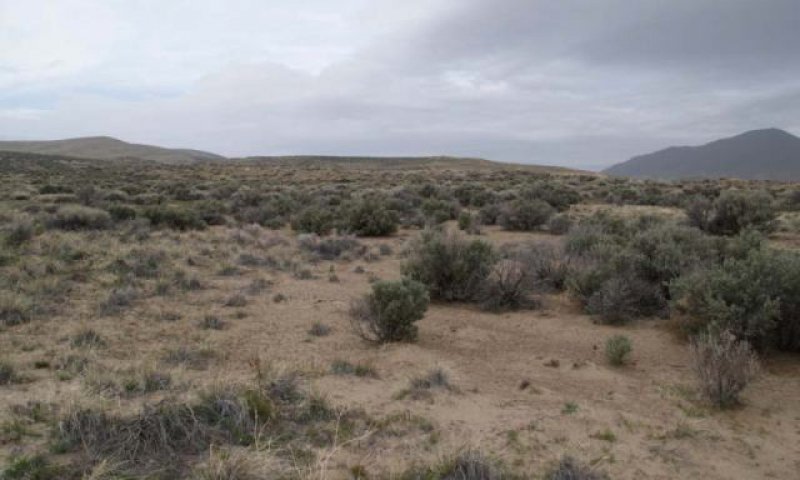
Figure 10. Plant community 2.1
This plant community phase is compositionally similar to 1.1 Plant Community with a trace of non-native annuals (cheatgrass and mustard). Ecological processes (soil hydrology properties, nutrient cycling and productivity) are also similar to 1.1 plant community. Ecological resilience has been reduced by the presence of non-native annual species and this community may respond differently following a disturbance, when compared to non-invaded plant communities.
Community 2.2
Plant community 2.2
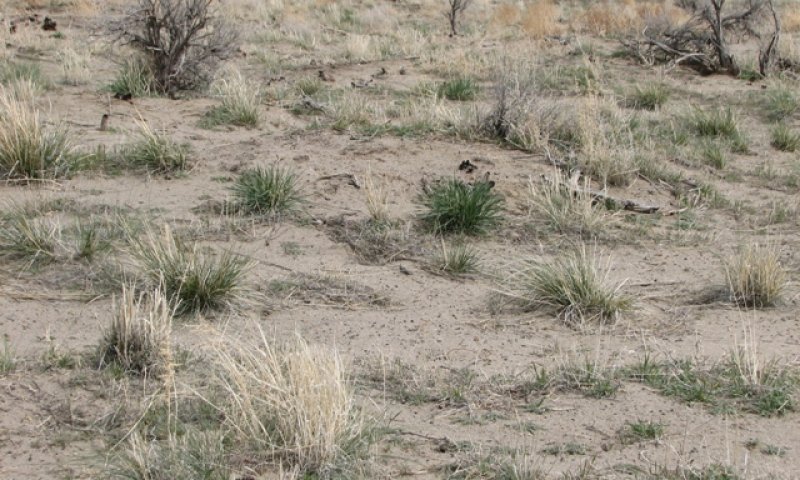
Figure 11. after wildfire
This plant community is characteristic of a post-disturbance, early seral community phase. The visual aspect of the plant community is dominated by Indian ricegrass, needleandthread, and basin wildrye; big sagebrush decreases after fire and perennial bunchgrasses initially increase. Spiny hopsage and ephedra sprout from the root crown following fire and may increase in cover. Sagebrush may be present in trace amounts or in unburned islands. Fast moving, low intensity wildfire results in the incomplete removal of sagebrush allowing for direct reestablishment and a faster recovery. Annual non-native species are present in the understory and maybe stable to increasing, depending on weather patterns and management decisions. In above-normal precipitation years, production may range from 900 to 1200 lbs/ac.
Community 2.3
Plant Community 2.3 (at-risk)
The at-risk plant community of state 2 is characterized by the over-dominance of sagebrush and other shrubs. In response to inadequate rest and recovery from defoliation, perennial grasses decline and the shrub overstory becomes dominant. Annual non-native species are stable or increasing within the understory. Bare ground is increasing. Resistance of the plant community to wind erosion and further weed invasion is reduced. Further disturbance, such as frequent fire and inadequate rest and recovery from defoliation this plant community will likely cross a threshold to State 3 or 4.
Pathway 2.1A
Community 2.1 to 2.2
This community phase pathway is a result of fire, insect or disease attack.
Pathway 2.1B
Community 2.1 to 2.3
This community pathway is a result of prolonged drought, inadequate rest and recovery from defoliation and absence of fire or other natural disturbance.
Pathway 2.2A
Community 2.2 to 2.1
The community pathway is a result of absence of disturbance and natural regeneration over time. Ten years or greater is required for big sagebrush to reach pre-fire conditions (Tirmenstein 1999).
Pathway 2.3A
Community 2.3 to 2.1
This community pathway is a result of fast moving, low intensity fire, Aroga moth infestation, adequate rest and recovery from defoliation or release from drought which removes shrub overstory and releases bunchgrass understory.
Pathway 2.3B
Community 2.3 to 2.2
This community phase pathway is a result of stand replacing fire (most likely during the dormant season) insect or disease attack. Non-native annuals may increase.
State 3
State 3
This state has crossed a biotic threshold and site processes (soil hydrology, nutrient cycling, and energy capture) are being controlled by the shrub component of the plant community. Perennial bunchgrass may or may not be present in trace amounts. The herbaceous understory is dominated by annual non-native species such as cheatgrass and mustards. Resiliency has declined and further degradation from fire facilitates a cheatgrass and sprouting shrub plant community. Fire return interval has shortened due to the dominance of cheatgrass in the understory and is a driver in site dynamics. Sagebrush may be eliminated by continued fire. Spiny hopsage and ephedra may resprout if grazing is controlled and drought does not occur following fire. Negative feedbacks enhance ecosystem resilience and contribute to stability of this state. These include the persistent seedbank and competitive ability of cheatgrass.
Community 3.1
Plant community 3.1
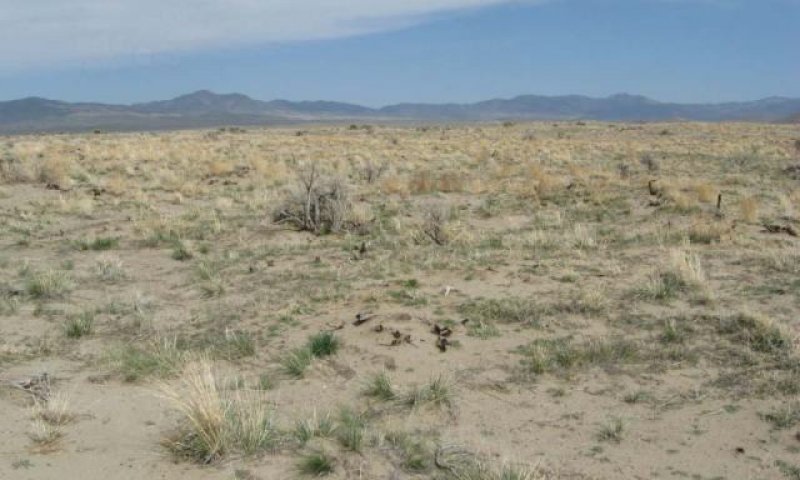
Figure 12. Dunes 6-10 Community Phase 3.1 NV769 MU270 Goldrun Soil T. Stringham
Sagebrush and various native shrubs associated with this site dominate the overstory. Cheatgrass, mustards and other annual weeds dominate the understory. Native perennial grass component is significantly reduced. Native species exhibit reduced vigor and reproductive capacity due to competition from non-native species and shrub overstory. Prolonged drought may result in overall reduction of the plant community. This plant community is at risk of increased fire, due to fuel provided by non-natives.
Community 3.2
Plant community 3.2 (at risk)
This plant community phase is dominated by non-native annuals. After fire, spiny hopsage, ephedra and rabbitbrush may sprout from the root crown. Sagebrush is present in trace amounts, if at all. Annual species dominate the understory and control ecological processes (soil hydrology, nutrient cycling, energy capture). This plant community is at risk of reoccurring fire, due to the continuous fuel bed provided by non-native annuals.
Reduced native perennials and increasing bare ground reduces ecological resistance and this plant community is at risk of crossing an irreversible threshold into State 4.
Pathway 3.1A
Community 3.1 to 3.2
This community phase pathway is a result of fire, insect or disease attack.
Pathway 3.2A
Community 3.2 to 3.1
This community phase pathway is a result of absence of disturbance (fire return interval >20 years) and natural regeneration over time (if a seed source is present for sagebrush).
State 4
State 4
This state has two community phases, with the primary phase (4.1) dominated by non-native annuals characterized by frequent fire. This state has crossed both a biotic and abiotic threshold. Annual non-native species, including cheatgrass, mustards and Russian thistle, dominate the plant community. Sprouting shrubs may be present in trace amounts; sagebrush is missing. Ecological processes are controlled by the non-native annual community during the spring growing season and by the physical process of wind movement of soil after the annual plant cover has senesced. In extremely degraded sites, wind erosion of soil may progress to dune formation or flattening (depending on landscape position) and near elimination of the annual plant community. Negative feedbacks contributing to the stability of this state include the persistence of non-natives and competition from non-natives for soil moisture and nutrients prevent recruitment of native species. Fine fuels provided by non-native annuals support a fire regime that is often too frequent for the successful establishment of sagebrush and favor an increase in non-native invasive annuals, however if time between fires is long enough sagebrush can return although this is a rare occurrence it is possible.
Community 4.1
Plant community 4.1
Annual species, primarily mustards and cheatgrass, dominate this community phase. Canopy cover and litter cover, during average and above-average precipitation years, is typically greater than 50 percent. Litter cover provides safe sites for the germination of cheatgass. Average soil stability values range from 1 to 3, which indicates low resistance to erosion. Trace amounts of perennial grasses or sprouting shrubs may be present. Annual production, dominated by cheatgrass and mustard, ranges from 1000-1300 pounds per acre in an average precipitation year.
Fire occurs frequent enough in this state to eliminate the reestablishment of sagebrush or dominance of sprouting shrubs. Extensive soil movement also precludes the natural reestablishment of shrub and herbaceous species. Restoration practices include stabilization of soil, control of non-natives, and seeding of native species during a high-rainfall period.
Community 4.2
Plant community 4.2
Sagebrush and/or sprouting shrubs dominate the overstory. Cheatgrass, annual mustards and other non-native annual species dominate the understory. This phase is very at risk of fire and conversion to an annual dominated site.
Pathway 4.1a
Community 4.1 to 4.2
This pathway is a result of time without disturbance to facilitate sprouting of shrubs.
Pathway 4.2a
Community 4.2 to 4.1
This community phase pathway is a result of fire.
Transition T1A
State 1 to 2
Trigger: Introduction of non-native annual species.
Slow variables: Changes in the kinds of animals and their grazing patterns, drought and/or changes in fire history that altered recruitment rates of native species.
Threshold: Reduction in deep-rooted herbaceous understory reduces productivity, changes nutrient cycling and soil stability. Annual non-native species cannot be easily removed from the system and have the potential to significantly alter disturbance regimes from their historic range of variation.
Transition T2A
State 2 to 3
Trigger: Inadequate rest and recovery from growing season defoliation and/or prolonged drought.
Slow variables: Long term decrease in grass density and reduced native species (shrub and grass) recruitment rates. Increased reproduction of non-native species.
Threshold: Loss of deep-rooted perennial bunchgrasses changes nutrient cycling, nutrient redistribution, and reduces soil organic matter.
Transition T2B
State 2 to 4
Trigger: Multiple stand replacing fires eliminate sagebrush and severely damage spiny hopsage. Typically occurs in the hot season.
Slow variables: Increased reproduction and cover of non-native invasive annuals.
Threshold: Loss of deep-rooted perennial bunchgrasses reduces infiltration and increases runoff; this leads to reduced soil organic matter and soil moisture. Modified fire regime (changes in intensity, size and spatial variability of fires).
Transition T3A
State 3 to 4
Trigger: Multiple fires within a 10 to 20 year timeframe
Slow Variables: Increased reproduction, cover and density of non-native annuals
Threshold: Modified fire regime (changes in frequency, intensity, size and spatial variability of fire). Changes in plant community composition and spatial variability of vegetation (loss of perennial bunchgrasses and sagebrush).


